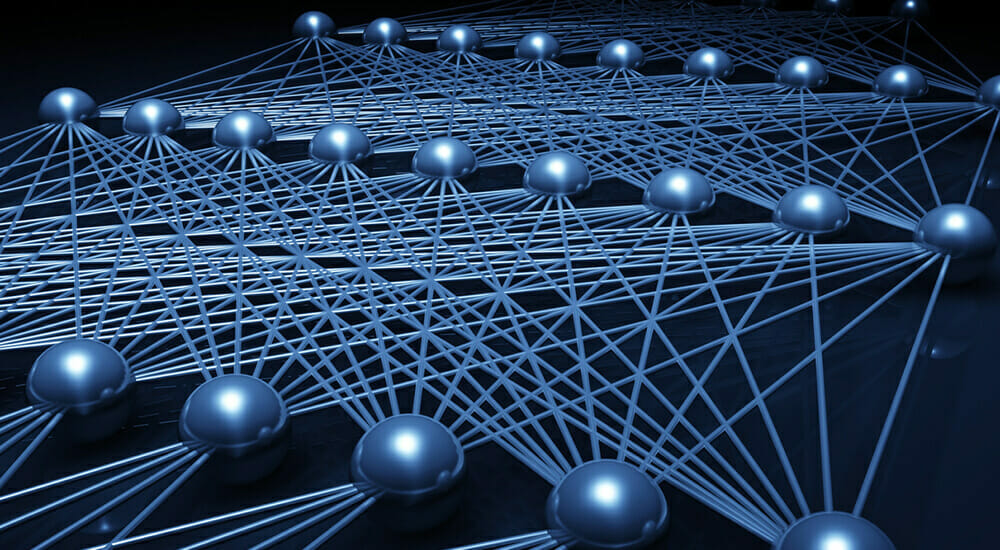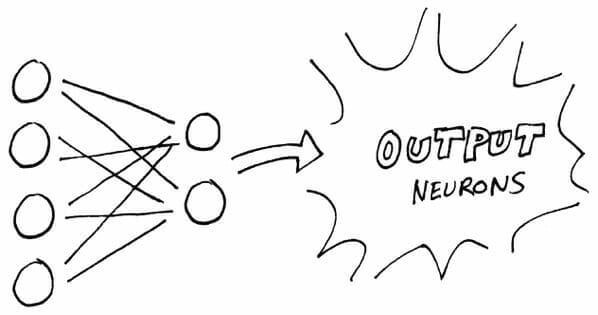Deep learning is a machine learning technique that creates an artificial neural network that is many layers "deep."


So what are neural networks? An artificial neural network (often referred to simply as a neural network) is a computer system modeled after the structure of a biological brain that facilitates machine learning.
The human brain is composed of about 100 billion neurons that communicate with one another electrochemically across minute gaps called synapses. A single neuron can have up to 10,000 connections with other neurons. Working together, neurons are responsible for receiving sensory input from the external world, regulating bodily functions, controlling muscle movement, forming and recording memories and thoughts, and more.
Neurons increase the strength of their connections based on learning and practice. Whether you're studying a new language, learning to play a musical instrument, or training for the World Cup, your neurons strengthen existing connections and create new connections for developing the requisite knowledge and skills. That's why the more you practice the better you get; selected neurons build new and more efficient paths between and among one another. Eventually, with enough study and practice, you perform certain tasks with little to no conscious effort.
Instead of being made up of neurons, an artificial neural network consists of nodes. Each node receives input from one or more other nodes or from an external source and computes an output. A node's output is then sent to one or more other nodes in the neural network or is communicated to the outside world. This communication might be as the answer to a question or as the solution to a problem.
Nodes are arranged in layers: an input layer, hidden layers, and an output layer. Data (such as a spoken word or phrase, an image, or a question) enters the input layer, is processed in the hidden layers, and the result is delivered via the output layer.

Picture nodes in a neural network as players in a marching band and each row of band members as a layer. Assume that none of the players knows the music to be played or how to move during the performance. Only the front row of band members can see the band leader (the drum major). The drum major gives the first row a signal that's passed through the remaining rows (layers), enabling all players to coordinate their movements and the playing of their instruments.

At first, players would be bumping into one another and playing the wrong notes, but with more and more practice, the players would get in sync and perform as a unit. They would learn.
To smooth the learning curve, the band creates a system that enables band members to provide feedback. As they move and play, the band members choose numbers that indicate their level of confidence (say from 0 to 100 percent) that they are doing it right. Based on each band member's confidence level, neighboring band members make small adjustments and then check to see whether their adjustments increased or decreased their neighbor's confidence level. The goal is to achieve a 100 percent confidence level for all band members.
The idea here is that this neural marching band network will learn on its own without additional input or correction from an outside source. Theoretically, at least, the nodes will eventually make enough small adjustments to produce the correct output (a stellar performance) through trial and error, learning from their mistakes.
As you can imagine, learning by trial and error can be very chaotic and time-consuming, especially when you have multiple entities making their own adjustments based on input from numerous other entities. In the case of our fictional marching band, band members would be bumping into one another and playing the wrong notes for hours, days, or weeks before they actually coordinated their efforts.
To overcome this challenge, AI developers attempt to tweak the network to make it more efficient. For example, suppose you gave more weight to feedback from the drummers because they set the rhythm. Perhaps you give their confidence level four times the importance as other band members. Now, when the band members make adjustments, they look more to the drummers to determine the net impact of the adjustments they made, and the marching band learns much faster.
Eventually, the band delivers a nicely choreographed and well-orchestrated performance to the output layer. If this were a neural network, the output could then be stored, and whenever instructed to do so, it could repeat its performance. In addition, the strengthened connections between certain neurons might make learning new musical arrangements easier.
Deep learning is a machine learning technique that creates an artificial neural network that is many layers "deep."
In one of my previous posts "The General Problem Solver," I discuss the debate over whether a physical symbol system is necessary and sufficient for intelligence. The developers of one of the early AI programs were convinced it did, but philosopher John Searle presented his Chinese room argument as a rebuttal to this theory. Searle concluded that […]
See strategies for fine tuning a neural network with backpropagation.